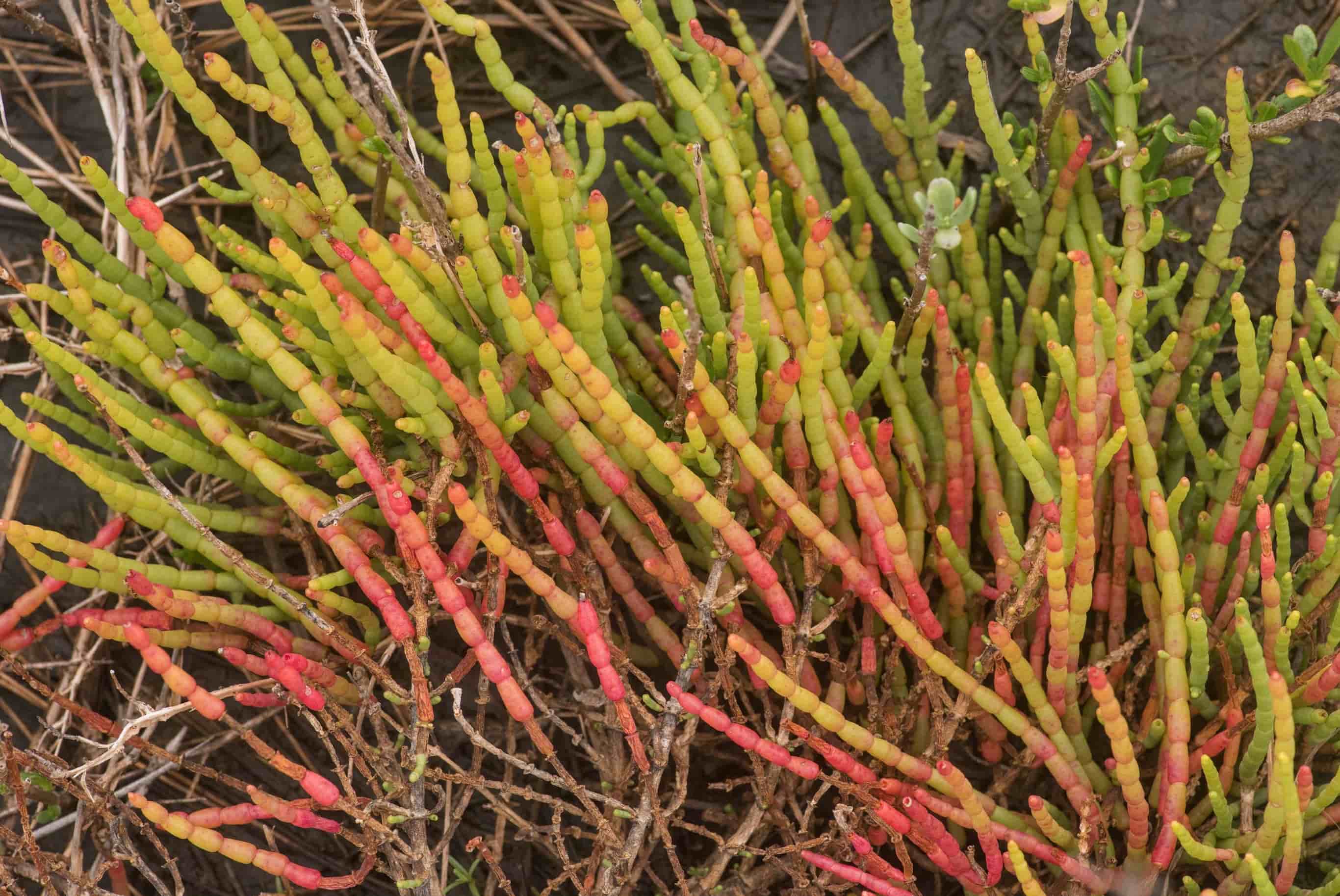
Ever heard of glasswort? This quirky plant, also known as pickleweed, thrives in salty environments like marshes and coastal areas. But why is it called glasswort? The name comes from its historical use in glassmaking. When burned, the ashes of glasswort produce soda ash, a key ingredient in glass production. Is it edible? Yes, glasswort is often used in salads and gourmet dishes for its salty, crunchy texture. What makes it special? Its ability to survive in high-salinity soils makes it a fascinating example of nature's adaptability. Curious to learn more? Let's dive into 15 intriguing facts about this unique plant!
Key Takeaways:
- Glasswort, also known as Salicornia, is a unique plant that thrives in salty environments. It has succulent stems, efficient photosynthesis, and stores excess salt, making it a fascinating adaptation for survival.
- Glasswort has historical uses in glassmaking, soap production, and as a food source. It is also rich in minerals, low in calories, and has antioxidant properties, making it a nutritious addition to meals.
What is Glasswort?
Glasswort, also known as Salicornia, is a fascinating plant with a rich history and unique characteristics. Found in salt marshes and coastal areas, it has adapted to thrive in salty environments. Let's dive into some intriguing facts about this remarkable plant.
Unique Adaptations
Glasswort has evolved some incredible features to survive in its harsh habitat. Here are some of its unique adaptations:
- Salt Tolerance: Glasswort can tolerate high salt levels, which would be deadly to most plants. It stores excess salt in its cells, allowing it to thrive in saline environments.
- Succulent Stems: The plant's stems are thick and fleshy, helping it retain water in dry conditions.
- Photosynthesis Efficiency: Glasswort performs photosynthesis efficiently even in high-salinity conditions, ensuring its survival and growth.
Historical Uses
Glasswort has been used by humans for various purposes throughout history. Here are some historical uses:
- Glassmaking: In the past, glassmakers burned glasswort to produce soda ash, a crucial ingredient in glass production.
- Soap Production: The plant's ashes were also used in soap making due to their high alkaline content.
- Food Source: Coastal communities have consumed glasswort as a vegetable for centuries, appreciating its salty flavor.
Nutritional Benefits
Modern science has revealed that glasswort is not just a historical curiosity but also a nutritious food. Here are some nutritional benefits:
- Rich in Minerals: Glasswort is packed with essential minerals like magnesium, potassium, and calcium.
- Low in Calories: This plant is low in calories, making it a healthy addition to various dishes.
- Antioxidant Properties: Glasswort contains antioxidants that help protect cells from damage caused by free radicals.
Ecological Importance
Glasswort plays a significant role in its ecosystem. Here are some ecological benefits:
- Erosion Control: The plant's roots help stabilize soil in coastal areas, reducing erosion.
- Habitat for Wildlife: Glasswort provides habitat and food for various wildlife, including birds and insects.
- Water Filtration: It helps filter and clean water in salt marshes, improving water quality.
Culinary Uses
Glasswort has found its way into modern kitchens, where chefs appreciate its unique flavor and texture. Here are some culinary uses:
The Final Word on Glasswort
Glasswort, a fascinating plant, thrives in salty environments and offers numerous benefits. From its historical use as a source of soda ash for glassmaking to its modern culinary applications, this resilient plant has proven its worth. Rich in nutrients, it provides a unique, salty flavor to dishes and can be a sustainable food source. Its ability to thrive in harsh conditions makes it a potential player in combating soil salinity issues.
Understanding glasswort's role in history, cuisine, and environmental sustainability highlights its importance. Whether you're a history buff, a foodie, or an environmentalist, glasswort has something to offer. So next time you see this unassuming plant, remember its rich history and potential. Embrace the versatility and resilience of glasswort, and consider how it might fit into your life or garden.
Frequently Asked Questions
Was this page helpful?
Our commitment to delivering trustworthy and engaging content is at the heart of what we do. Each fact on our site is contributed by real users like you, bringing a wealth of diverse insights and information. To ensure the highest standards of accuracy and reliability, our dedicated editors meticulously review each submission. This process guarantees that the facts we share are not only fascinating but also credible. Trust in our commitment to quality and authenticity as you explore and learn with us.


